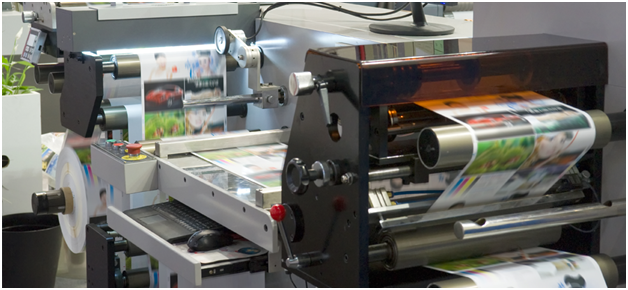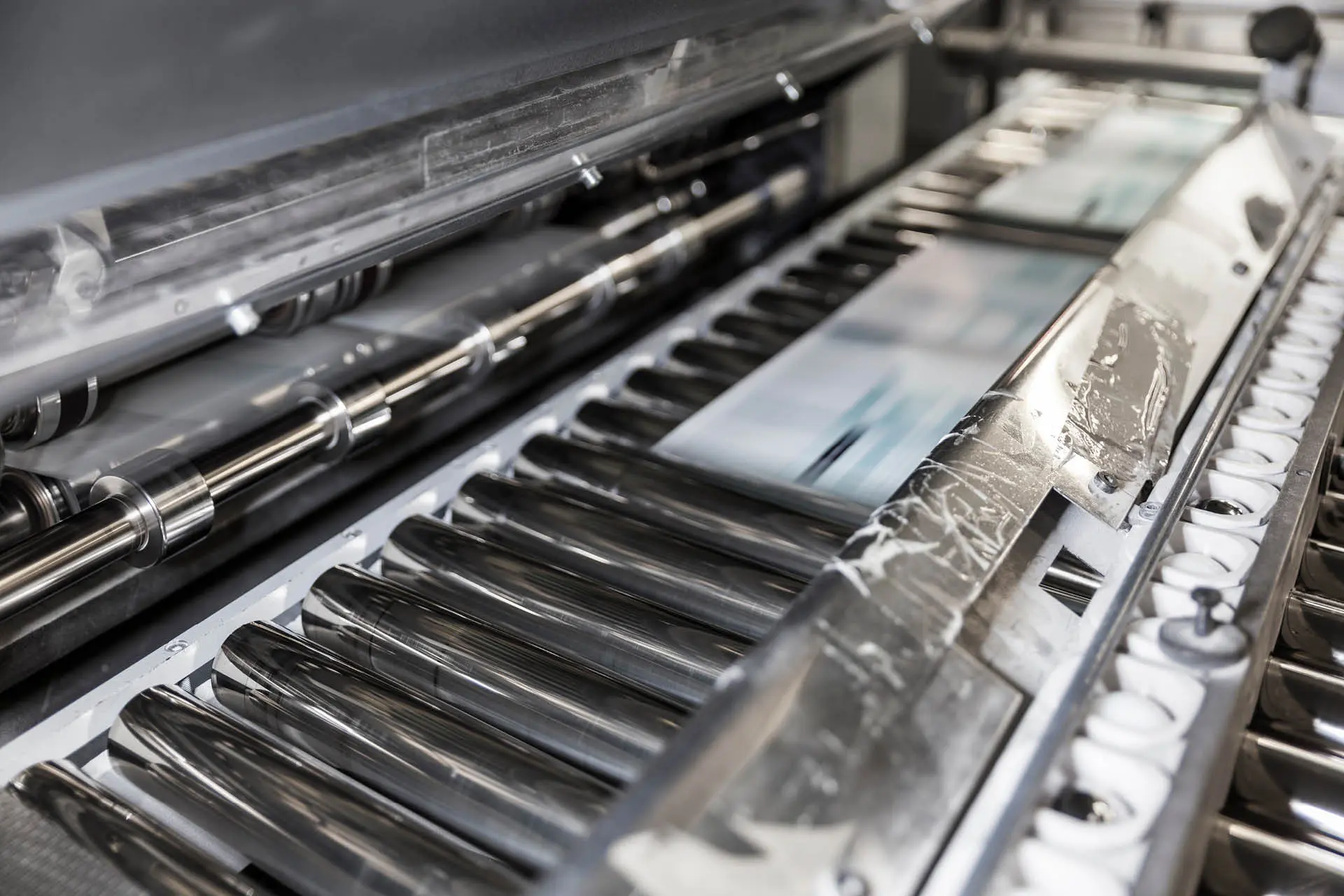The Important Overview to Understanding Litho Printing and Its Applications
Litho printing stands as a significant technique in the printing sector, rooted in the principles of oil and water repulsion. This method not just provides high-quality images however also accommodates numerous commercial needs. Its applications range from marketing materials to packaging, showcasing its versatility. As the industry adapts to brand-new technologies, the evolution of litho printing increases concerns concerning its future and significance in an electronic landscape. What lies in advance for this sustaining technique?

What Is Litho Printing?
Litho printing, a widely used printing method, relies upon the concept of oil and water repulsion. This method employs a flat printing surface, typically a steel plate, which is treated to ensure that the image locations are responsive to oil-based inks while the non-image locations repel them. The process begins with the development of a picture on home plate, usually with illustration or photographic methods. As soon as the photo is prepared, the plate is wetted with water, adhered to by the application of ink. The ink adheres just to the image areas, enabling for precise recreation of graphics and text. Litho printing is preferred for its ability to create top notch prints with fine detail and lively colors. It is generally used in commercial applications, consisting of newspapers, publications, and product packaging, showcasing its flexibility and effectiveness in satisfying the needs of modern-day printing.
The Background of Lithography
Although lithography is a contemporary printing staple, its origins trace back to the late 18th century when German dramatist Alois Senefelder developed the method in 1796. At first created as a method for duplicating messages and images, lithography utilized a level rock surface area to produce prints via a chemical process. Senefelder's innovation enabled greater versatility and imaginative expression contrasted to previous printing methods.By the 19th century, lithography gained widespread acceptance, coming to be a prominent selection among musicians and publishers. It made it possible for the automation of pictures, maps, and posters, significantly influencing the printing sector. The technique additionally advanced with the intro of lithographic presses, improving effectiveness and quality.As the industrial revolution progressed, lithography adapted to meet the demands of industrial printing, paving the method for modern-day applications. Today, it remains an essential method in various fields, consisting of posting, packaging, and art reproduction.
Exactly How Litho Printing Functions
A key feature of litho printing is its dependence on the concept of oil and water repulsion - litho printing. In this process, pictures are moved from a flat surface area, usually a steel or polymer plate, to paper. Home plate is treated to ensure that the areas intended for printing bring in ink, while the non-image areas repel it because of their affinity for water. The printing starts by dampening the plate with water, which adheres to the non-image locations. Subsequently, an oil-based ink is applied, sticking just to the intended picture areas.When home plate enters contact with the substrate, the ink is transferred, developing a print. The litho printing procedure can generating top notch pictures with great detail. It is typically made use of for automation due to its effectiveness and consistency, making it a preferred approach for industrial printing applications
Benefits of Litho Printing
One remarkable benefit of litho printing is its capacity to produce top notch photos consistently, making it an excellent option for business projects. This printing technique makes use of a level printing plate, making certain even ink distribution and sharp information. Litho printing is likewise renowned for its color accuracy, allowing vibrant and true-to-life reproductions, which is important for branding materials.Moreover, it sustains a variety of substrates, consisting of paper, cardboard, and even certain plastics, improving its adaptability. The process is cost-efficient for big runs, as economies of range decrease per-unit expenses. On top of that, litho printing has a quick turnaround time, enabling efficient production schedules.Its sturdiness likewise implies that published materials stand up to fading, guaranteeing that the final item keeps its visual appeal with time. On the whole, these advantages make litho publishing a recommended selection throughout various sectors, contributing to its enduring appeal.
Applications of Litho Printing in Company
As businesses progressively seek trusted and high-quality printing solutions, litho printing emerges as a principal in various applications. This method is specifically favored for creating marketing products such as pamphlets, leaflets, and magazines, many thanks to its ability to deliver vivid colors and sharp images. On top of that, litho printing is frequently employed for product packaging services, enabling business to create attractive labels and boxes that enhance product appeal.In the sector of corporate identity, litho printing is instrumental in creating professional stationery, calling card, and advertising goods, which aid enhance brand acknowledgment. Additionally, it is widely utilized in the publishing sector for printed materials such as publications and publications, where consistent quality is vital. In general, litho printing's adaptability and effectiveness make it a crucial tool for businesses aiming to interact properly and establish a strong market presence.
Artistic Use Litho Printing
Litho printing acts as a versatile medium in the domain name of printmaking, offering artists a distinct approach to share their imagination. This strategy permits for a vast array of creative applications, from standard prints to modern analyses. By discovering the subtleties of litho printing, artists can harness its unique qualities to boost their work.

Printmaking Techniques Review
The virtuosity of printmaking includes a diverse variety of strategies, with litho printing standing apart for you can try these out its distinct strategy to picture development. This method relies upon the principle of oil and water repulsion, permitting artists to attract straight onto a sedimentary rock or steel plate with a greasy medium. As soon as prepared, the plate is dampened and tattooed, moving the image onto paper through stress. Litho printing is commemorated for its ability to create great information and abundant tonal variations, making it a popular option amongst artists. Furthermore, the procedure is versatile, accommodating both conventional strategies and modern adaptations. This adaptability permits litho printing to bridge various creative designs, improving the printmaking landscape with its distinctive qualities and capabilities.
Special Artistic Applications
Exploring the one-of-a-kind artistic applications of litho printing exposes its remarkable versatility in numerous innovative fields. Musicians use litho printing to create intricate layouts and textures, allowing for expressive and detailed works. The process facilitates the reproduction of vibrant colors, making it excellent for pictures and art prints. Many modern artists embrace lithography for its ability to integrate standard methods with modern concepts, resulting in cutting-edge art work. Furthermore, litho printing is typically used in the manufacturing of restricted edition prints, enhancing their worth and appeal. The responsive top quality of litho prints adds a distinct measurement, attracting collectors and art fanatics alike. In general, litho printing stays a substantial tool for creative expression, connecting timeless methods with contemporary imagination.
The Future of Litho Printing in a Digital Globe
As the printing sector advances, litho printing faces the obstacle of incorporating electronic modern technologies to continue to be appropriate. Methods concentrated on electronic integration, alongside patterns in sustainability and technology, will form you could check here its future - litho printing. Comprehending these characteristics is necessary for sector stakeholders seeking to adjust to a rapidly changing landscape
Digital Assimilation Techniques
An expanding variety of litho printing firms are embracing electronic combination techniques to stay affordable in a significantly electronic landscape. By including electronic process, these firms can enhance procedures and boost performance. This combination enables real-time information administration and enhanced communication between departments, lowering turnaround times significantly. Furthermore, digital devices allow far better modification and personalization of published products, accommodating certain customer needs. Firms are additionally adopting hybrid printing options that combine conventional litho strategies with electronic innovations, providing flexibility in production. Leveraging information analytics helps in understanding market trends and consumer choices, permitting services to make enlightened choices. Generally, electronic assimilation is coming to be vital for litho printing firms aiming to introduce and respond to evolving market needs.
Sustainability and Technology Trends

Frequently Asked Inquiries
What Products Are Commonly Used in Litho Printing?
The products frequently used in litho printing consist of light weight aluminum plates, ink, water, and paper. Each part plays an important function in the printing procedure, guaranteeing premium photo recreation and efficient transfer of ink onto why not check here the substratum.
Just How Does Litho Printing Contrast to Digital Printing?
Litho printing uses premium shade consistency and top quality for large runs, while electronic printing stands out in brief runs and customization. Each method has distinct benefits, accommodating different requirements based upon manufacturing scale and cost-efficiency.
What Is the Regular Turn-around Time for Litho Printing Projects?
The common turnaround time for litho printing projects varies, typically varying from a few days to numerous weeks. Elements affecting this duration include task intricacy, amount, and required completing procedures, influencing total manufacturing timetables.
Can Litho Printing Accommodate Custom Sizes and Formats?
Litho printing can certainly suit custom dimensions and styles, allowing for flexibility in layout. This flexibility enables customers to achieve distinct print outcomes tailored to their particular needs, enhancing the total effectiveness of their jobs.
What Are the Ecological Influences of Litho Printing?
The environmental impacts of litho printing consist of resource usage, chemical usage, and waste generation. However, improvements in sustainable methods and environmentally friendly products are progressively reducing these unfavorable impacts, promoting a more eco accountable strategy to printing.